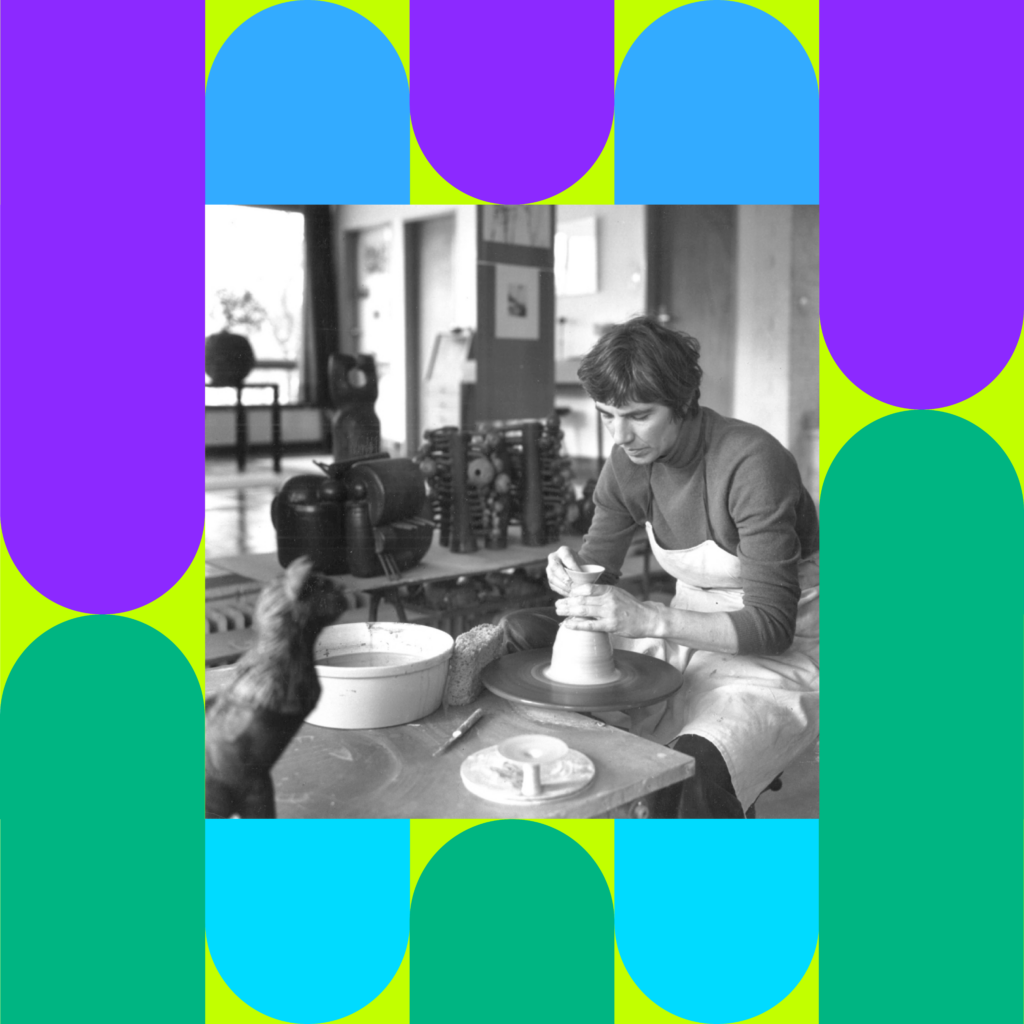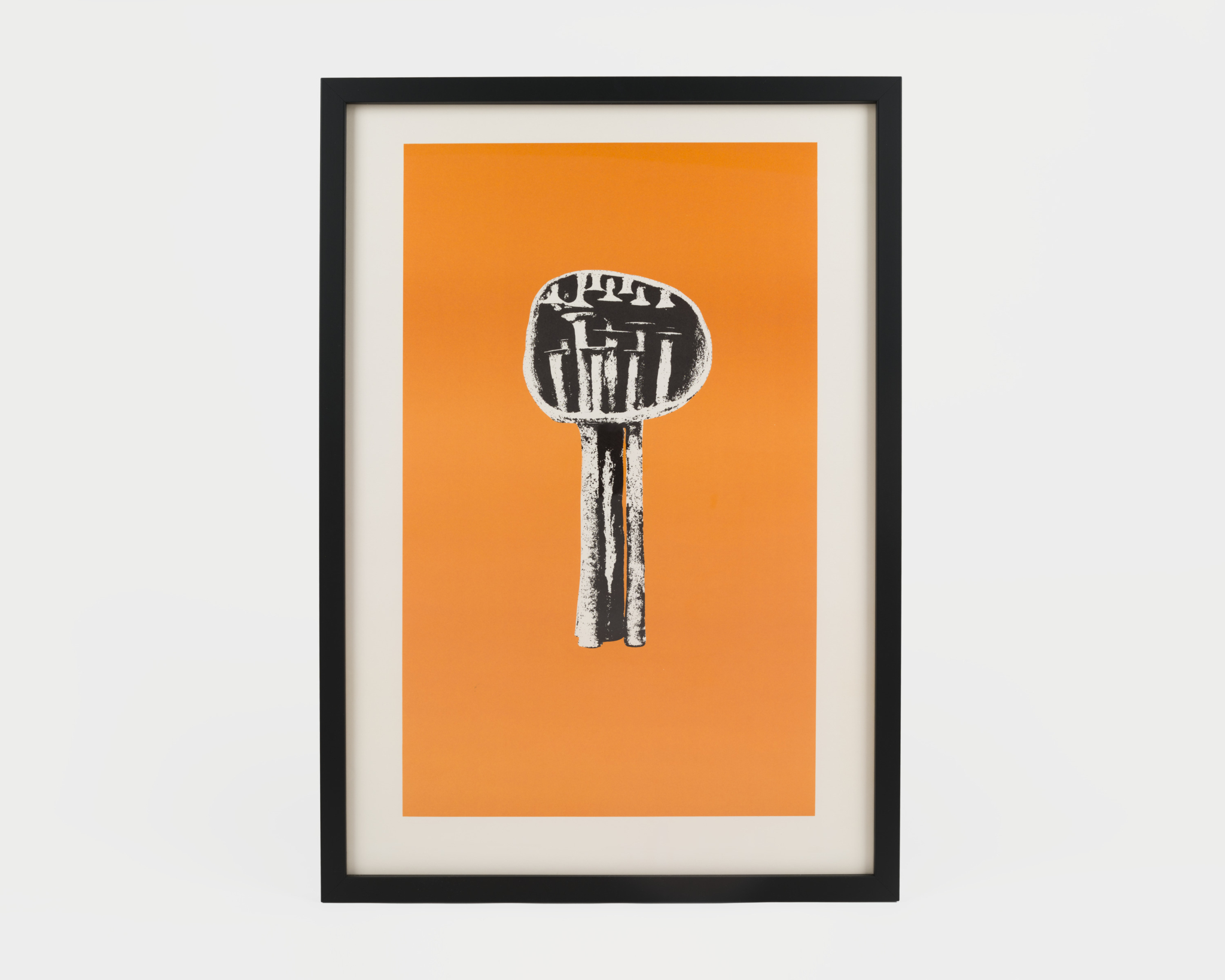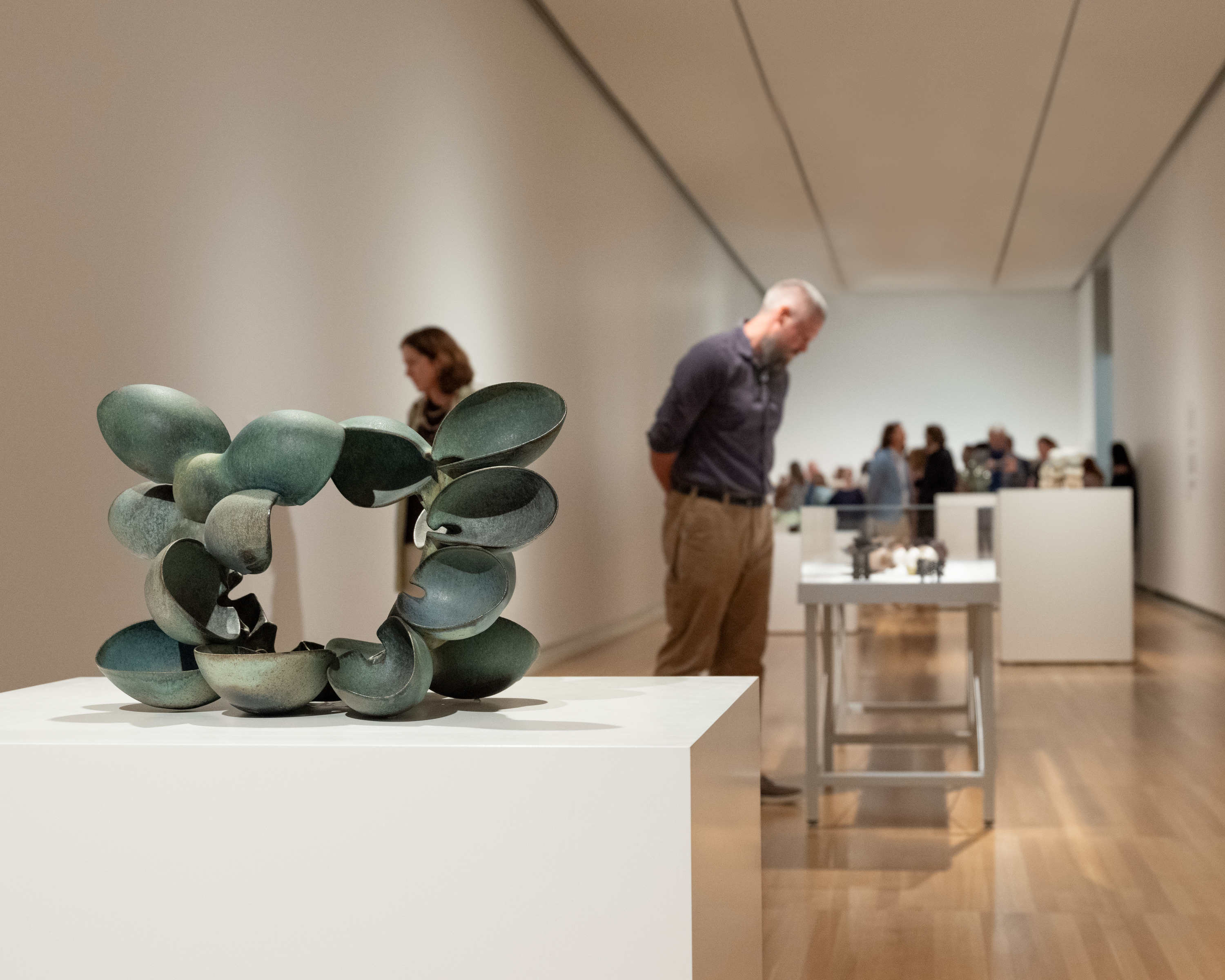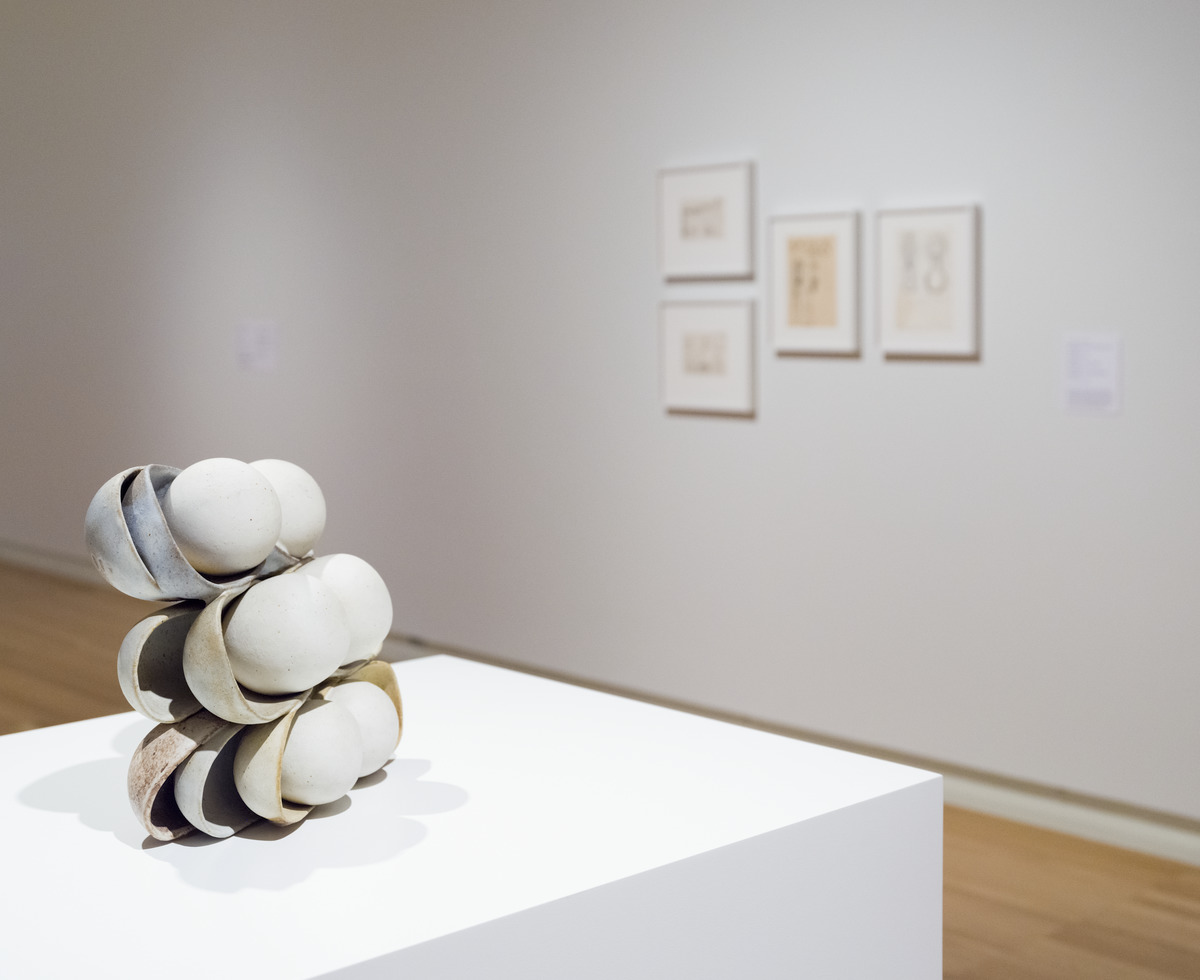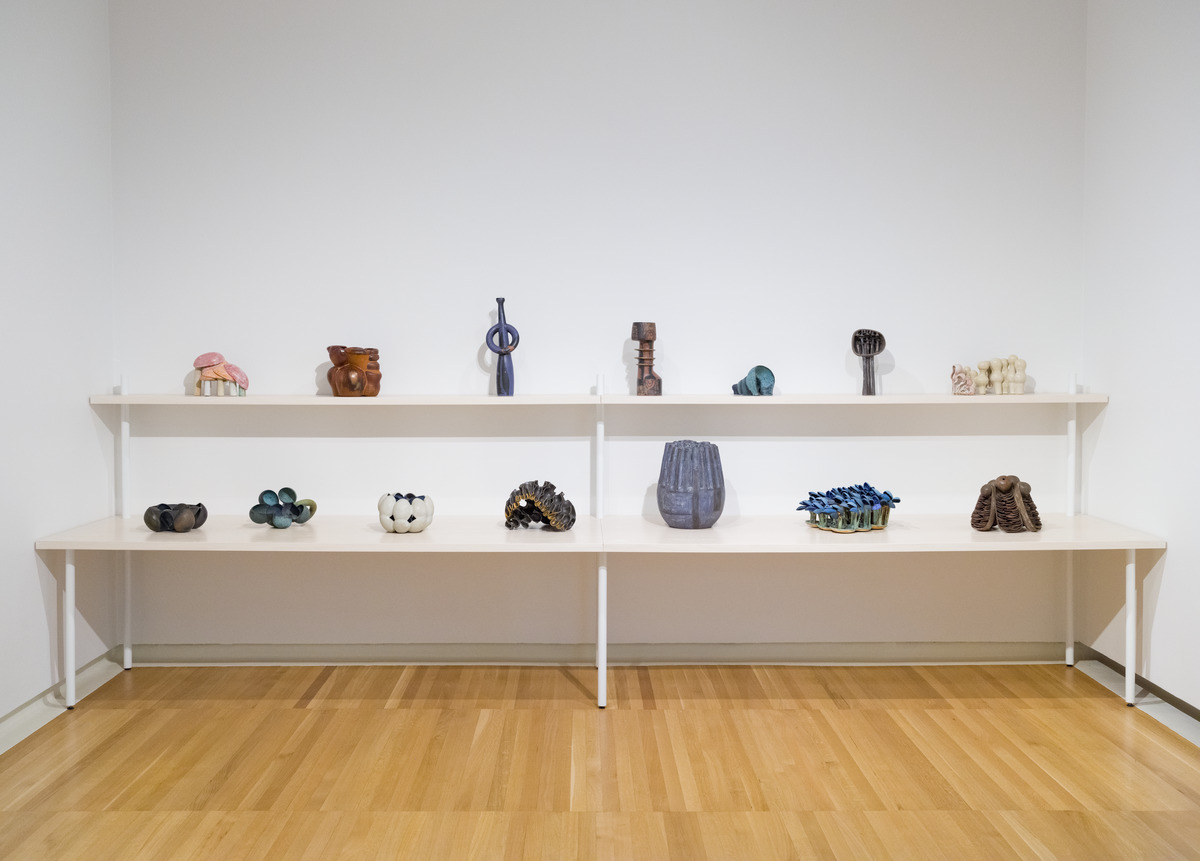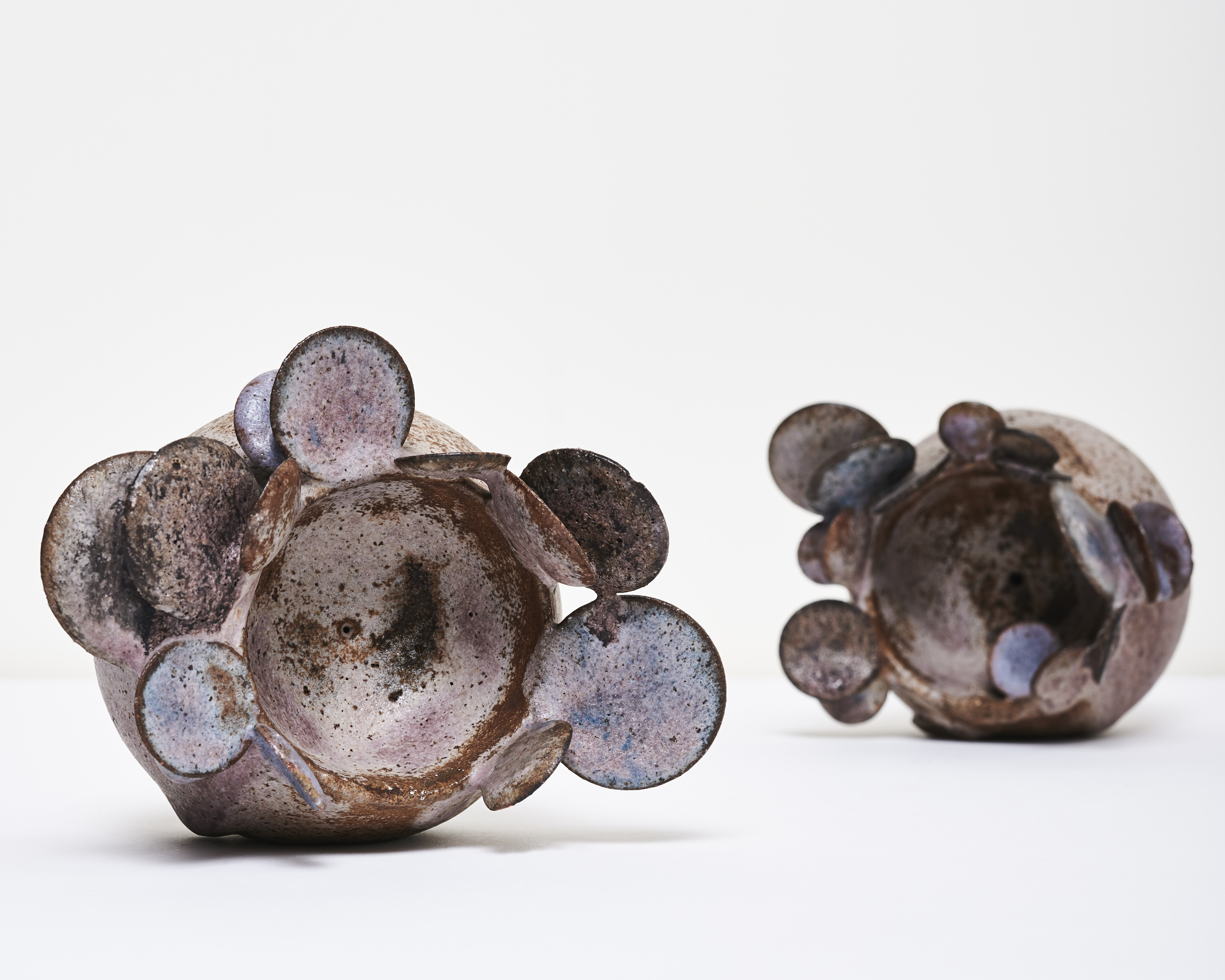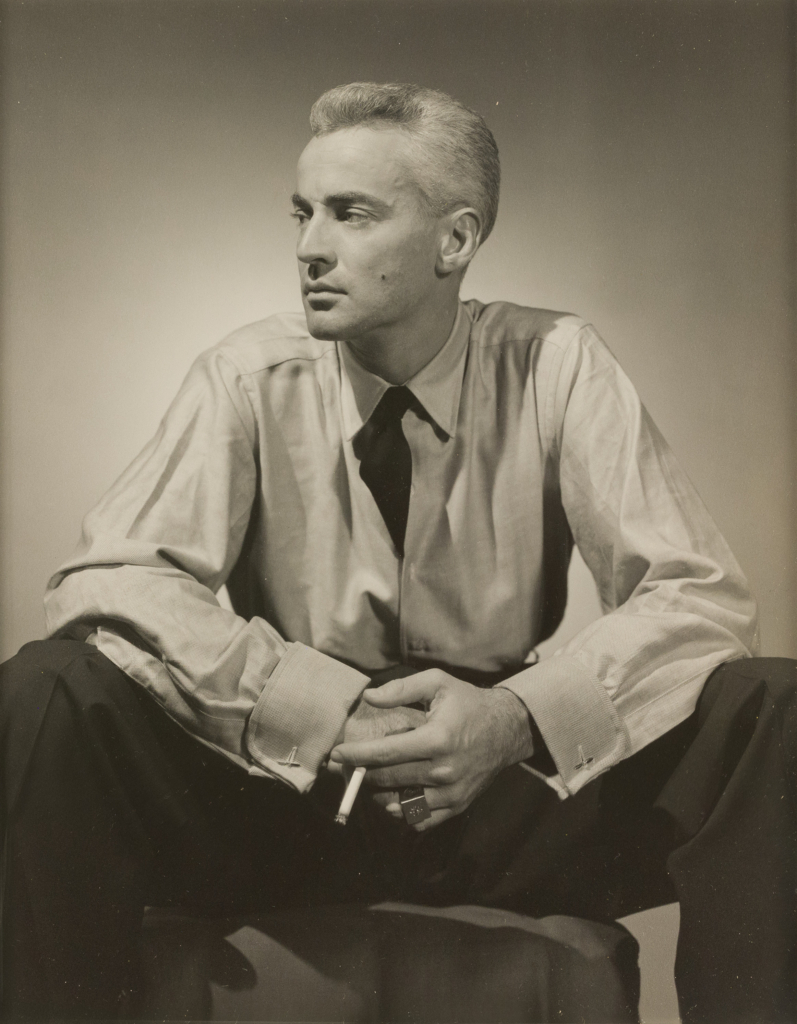Beate Kuhn: Turn is the first solo museum exhibition of German artist Beate Kuhn (1927–2015) in the United States. The survey welcomes visitors to journey through six decades of Kuhn’s deeply personal, rhythmic practice grounded in perpetual experimentation on her potter’s wheel. Beate Kuhn: Turn offers an intimate view into the artist’s contemplative process and exploration of form, expression, and contrast through works created at the beginning of her career until the final years of her life.
At the intersection of Modernist painting, sculpture, and studio pottery, Kuhn found creative resonance for her practice. The beautiful and sublime aspects of nature were another muse as she channeled brilliant assemblages of parts: seed pods, succulents, exoskeletons, fungi, and shells. Throughout her career, Kuhn skillfully played with contrasts in her artworks: shiny and matte, light and dark, convex and concave, stillness and movement, individual and collective, birth, death, and decay.
Beate Kuhn: Turn is organized by Rachel Delphia, Alan G. and Jane A. Lehman Curator of Decorative Arts and Design, with Alyssa Velazquez, assistant curator.
About the Artist
Born in Düsseldorf, Germany, in 1927, Beate Kuhn grew up in an artistic family living in the shadows of World War II. Just 17 when the war ended, she embraced newfound mobility and educational opportunity, studying art history and ceramics and bicycling across the European continent to view museum exhibitions. From 1949 to 1951, Kuhn learned to throw on the potter’s wheel at the Werkkunstschule (School of Applied Arts) Wiesbaden, a training that would become integral to her artistic practice. From 1951 to 1953, she furthered her ceramic education at the Werkkunstschule Darmstadt, where she perfected techniques for mixing and applying clay slips, engobes, and glazes.
Kuhn launched her career as a studio potter from a shared workshop in Lottstetten, near the Swiss border. She experimented with abstract female figures—assembled from vessel forms and embellished with colorful surfaces—and designed objects for the internationally renowned porcelain manufacturer Rosenthal in Selb. In 1957, Kuhn built a home and studio in Düdelsheim, near Frankfurt, on the property of her friend and fellow Darmstadt potter, Karl Scheid. New contexts, materials, and facilities contributed to a transformation of her art. By the mid-1960s, Kuhn’s work had shifted away from the utilitarian—vases, cups, and plates—toward sculptural objects comprised of these essential forms.



